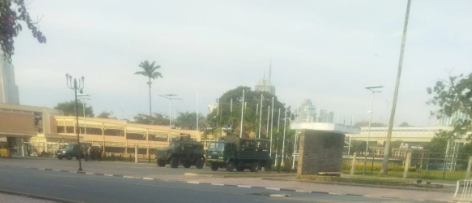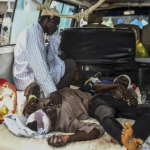On the third week of anti-government protests, Nairobi’s Central Business District (CBD) appeared relatively calm in anticipation of the upcoming #OccupyCBDTuesday demonstrations.
A check by Citizen Digital indicated that the CBD was quiet, with many businesses opting to remain closed. Traffic flowed normally on major highways such as Waiyaki Way, Mombasa Road, and Thika Road. Security officers were deployed to cordon off roads leading to State House, redirecting motorists to alternative routes.
In Migori town, demonstrations commenced in the morning, causing transport disruptions and prompting businesses to shut down. Protesters took to the streets, erecting barricades with stones while chanting slogans against the Kenya Kwanza government.
Online posters encouraged all Kenyans to join in protesting against budgetary corruption and demanding the removal of the current regime.
Meanwhile, in Kisumu, activist Boniface Akach confirmed plans for protesters to march in honor of those killed by police. The gathering was set to take place at the Jaramogi Oginga Odinga Sportsground.
During a roundtable discussions with the media, President William Ruto alleged that the police would protect peaceful protestors but at the same time fight against ‘criminals’ who camouflage as Gen Zs to cause chaos. He also pointed out that the Kenya Defence Forces (KDF) would be used as a last resort if the protests turned into mayhem.
“The KDF will not be in the streets. They only come as a last resort. If the demonstrations will be peaceful I promise you the police will be there to protect the demonstrators,” Ruto said.



